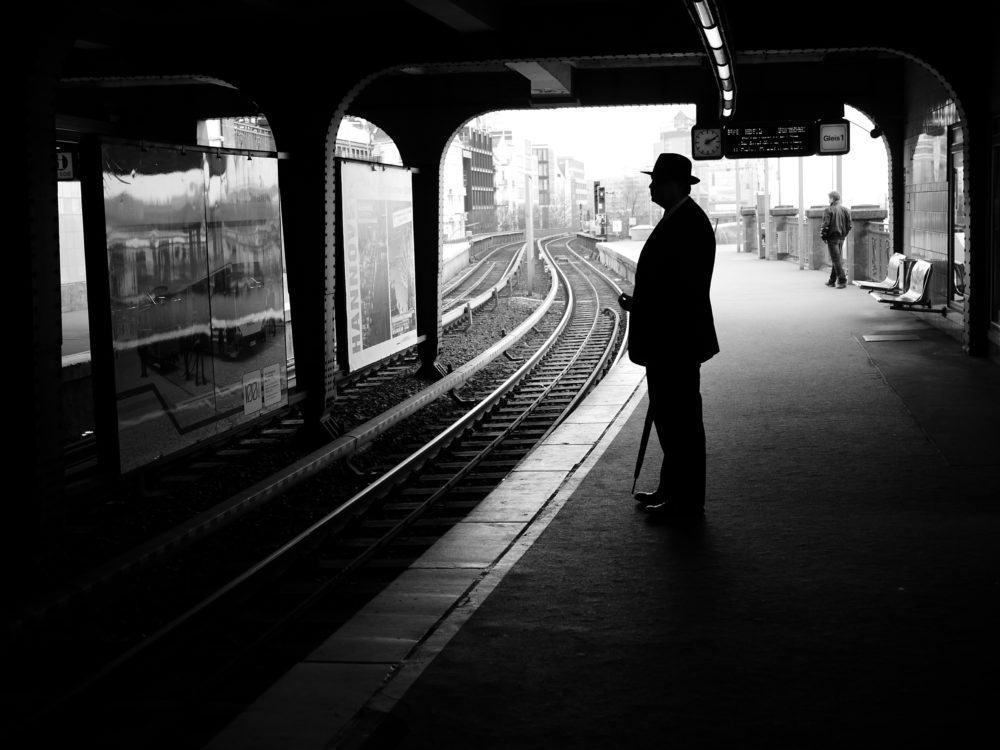Street Photography
by Thomas Leuthard
Street Photography is more than going for a walk with your camera. It is a question of being part of the street and observing things that other people would never see.
Thomas Leuthard is one of the 5 most active Street photographers, we chose to exhibit in this issue.
Thomas Leuthard’s goal is to get people away from the hype about gear towards a more story telling and composition focussed approach. He provides several elements to learn street photography from scratch. You can start with one of the free ebooks or purchase a video training. Sometimes he also teaches workshops or organizes photo walks. The most important thing is to go out and shoot. Never forget to have fun, shooting on the streets…
Thomas Leuthard’s website:
http://thomas.leuthard.photography/
Introduction
When is it street photography?
Bruce Gilden once said that “If you can smell the street by looking at the photo, it’s a street photograph”. This brings it to the point. You cannot point your camera out to the street and make a photo. It’s not that simple. I guess you have to get into it to understand it. Some people even say that 99% of the photos out there are not street photography at all. Don’t think too much about this, just look at other people’s photos. Most important is that a photo
tells a story.
What are the differences?
Street photography is very versatile. The hardcore guys see strange things only. Like people in the foreground matching the background in color, patterns and so on. Some people more like a daily situation or emotion. Some make photos which make you think or which tell a story. I personally like candid portraits very much, but some people even think this is not street photography
at all. There is no rule or right way. Just figure out what you like and follow that path until you get it right.
Equipment
Gear is highly overrated
You may ask a lot of people and you will get a lot of different answers about which camera is the best for street photography. You can also buy a new camera every year as there is a big industry telling you that you should buy new equipment. But if you remember the old days, the masters of photography, did they have good equipment? Not really. Compared to today’s features
they had nothing. But with this “nothing” they made incredible artwork.
Never ever think that you can do better photos with a better camera. This is absolute nonsense.
Use your built-in tools
There is only one thing that makes a difference in street photography which is your eye. If you have a good eye, you will see the relevant things. If not, you will have problems seeing the relevance. It sounds simple, but you just have to train your eye to become a better Street Photographer.
The gear I’m using
Currently I do 95% of my street photos with my Lumix GF1 and a 20mm pancake lens. For candid portraits I use my Nikon D7000 with a 50mm lens. That’s all I need. There is not a lot of different equipment being used on the street.
You can have a look at the EXIF data of the photos in this book by clicking on it. I have linked every photo to Flickr where you can see all the details.
The smaller the better
While you have to have a big camera, when you have a shooting for a customer, in street photography it’s more important to have a discreet camera. The smaller the better is the key. Since I started shooting with my GF1 I noticed that people don’t even realize that I have taken a photo of them. Sometimes they think I’m a tourist, which is perfectly fine for me.
My Workflow
My workflow is different
When photographers talk about their workflow, they mean the creation of a photograph from pressing the shutter release button to the final print. In street photography and in my eyes this workflow begins much earlier and never really ends. There are so many activities you can do with your work in order to get it seen by the public. It somehow ends when you upload it to your website and share it with your community. But the good photos you may hand in to contests, print to postcards, other people will use in campaigns and so on. When a photo is being created and shared, its lifecycle just begins and the workflow starts. Ideally one of my street photos is being shared around
the world that people all over the place can see it, use it, like it, print it, show it to their friends and whatever you can imagine.
A three phase approach
I see my workflow in three different phases. The first part is the preparation, an idea, a plan, learning how to see, train your eyes and such things. It’s actually everything that has nothing to do with your camera. This means all your thoughts, your reading, your looking for new opportunities and ideas.
The second phase is everything with your camera and the processing afterwards until a photo is finished. So you take the camera out of the bag, make the shot, go home, process it and store it on your hard drive. Then the third and most important phase starts. What are you doing with this photo you have taken and processed?
Read the full article on Lens Magazine Issue #18 Life in the City

Copyrights To Thomas Leuthard© All Rights Reserved

Copyrights To Thomas Leuthard© All Rights Reserved

